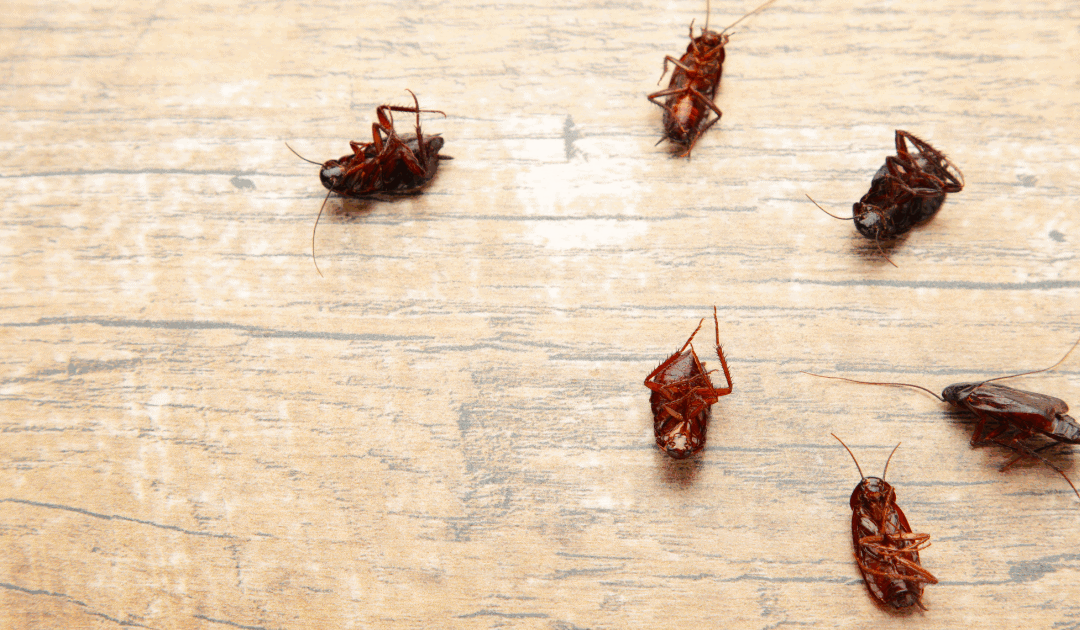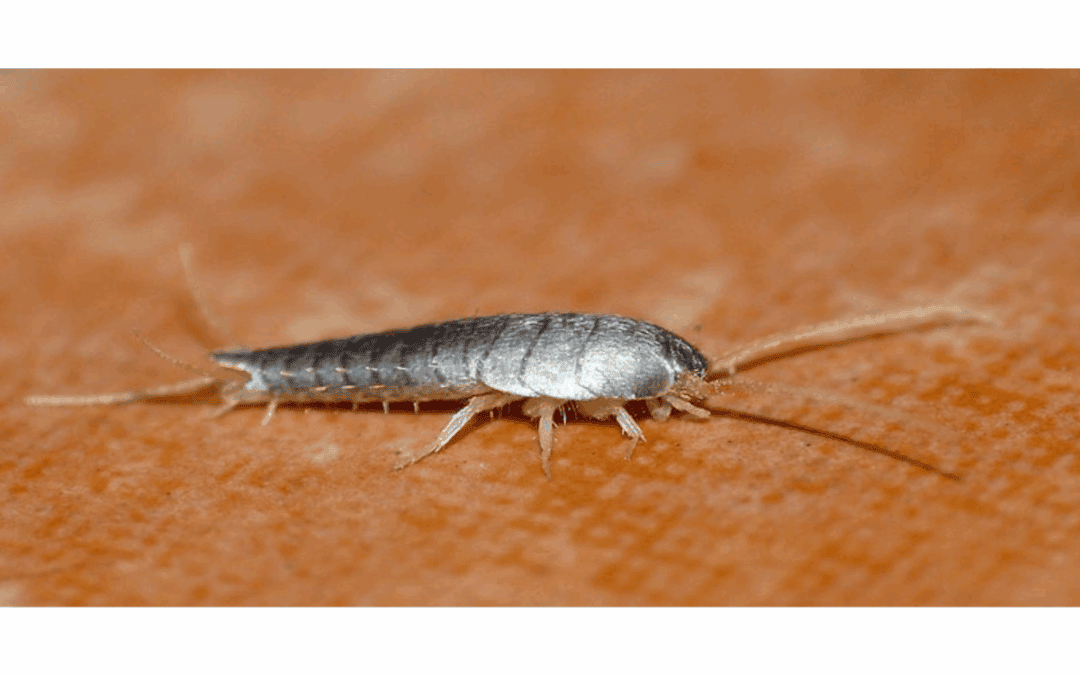READY TO GET STARTED?
REQUEST A FREE ESTIMATE
Fill out the form below or call (336) 226-1448 for a free, no-obligation estimate.

As fall settles across North Carolina, homeowners often notice an unwelcome increase in pests, especially smoky brown cockroaches. While typically an outdoor species, October is prime time for these roaches to move indoors, seeking warmth and moisture as temperatures drop. Understanding their behavior is the first step toward keeping them out of your home.
This guide explains why smoky brown cockroaches are more active in October and offers practical prevention tips to protect your property.
Smoky browns are large, dark brown to mahogany cockroaches that thrive outdoors in warm, moist environments such as mulch beds, woodpiles, leaf litter, and gutters filled with debris.
In October, dropping nighttime temperatures trigger their search for overwintering sites. Your home—with its heated interior, plumbing, and sheltered spaces—is the perfect target. Strong fliers and attracted to lights, these cockroaches often enter through open doors, windows, or small structural gaps.
While smoky brown cockroaches don’t bite, they can carry bacteria and germs from unsanitary areas, contaminating food surfaces, utensils, and stored items. Their droppings and shed skins can also trigger allergic reactions and asthma, especially in children and sensitive individuals.
Indoor infestations often signal underlying moisture issues, such as leaky pipes, clogged gutters, or poorly ventilated crawl spaces. Fixing these conditions while addressing the infestation protects both your home and your health.
Inspect your home’s exterior and seal cracks and gaps in the foundation, around windows, and where utility lines enter. Install weather stripping on doors, repair screens, and cover vents or drains with fine mesh.
Make your property less appealing by cleaning gutters, directing downspouts away from the foundation, storing firewood away from the house, and removing leaf litter or organic debris. Improve ventilation in crawl spaces and attics to reduce damp areas.
Since smoky browns are attracted to lights, consider switching to yellow or sodium vapor bulbs, which draw fewer insects.
Smoky brown cockroaches often hide in hard-to-reach areas, making an established infestation difficult to fully address with DIY methods. When prevention measures aren’t enough, a pest control professional can help identify entry points, locate harborage areas, and suggest a targeted plan to manage the population effectively.
Having expert guidance ensures the problem is addressed as soon as possible and thoroughly, giving homeowners confidence that their home is protected as the cooler months arrive.

September in North Carolina brings a shift in pest activity as insects, rodents, and other critters look for warmth and food before cooler weather arrives. Staying ahead of these seasonal changes can make all the difference in keeping your home comfortable and pest-free. This year, homeowners are paying attention to prevention, eco-conscious choices, and smarter seasonal strategies that work with nature rather than against it. Here are 3 pest control trends North Carolina homeowners should pay attention to this fall!
Homeowners are moving away from reacting to infestations and instead focusing on preventing pests from getting in at all. Sealing cracks, repairing screens, and keeping yards tidy can go a long way toward reducing pest pressure. In North Carolina, where warm weather can linger into fall, pests like ants, roaches, and rodents are quick to take advantage of even the smallest entry point.
More people are also scheduling seasonal inspections to address problem areas before pests become active. These proactive checks help spot things like moisture buildup, unsealed utility lines, or debris around the foundation — all of which can invite unwanted visitors.
Many families are choosing pest control options that protect their home without harming beneficial insects or the surrounding environment. This might include plant-based treatments, targeted bait stations, or exclusion methods that keep pests out without the need for widespread chemical applications.
North Carolina’s varied climate means different regions face different pest pressures, and eco-conscious approaches are proving effective in both urban neighborhoods and rural areas. Whether it’s using a botanical spray for mosquitoes or a physical barrier to block rodents, these methods allow homeowners to protect their space in a way that supports long-term balance.
Another growing pest control trend is staying in tune with the seasonal behavior of pests. As September rolls in, mosquitoes, wasps, and ants may still be active, while spiders and rodents start preparing for winter. Knowing what’s most likely to show up — and when — helps homeowners focus their efforts where they’ll matter most.
For example, late summer rains can lead to a spike in mosquito populations, while cooler evenings can send rodents looking for shelter indoors. Simple actions like cleaning gutters, storing firewood away from the house, and trimming vegetation can make a big difference this time of year.
September is the perfect time to combine prevention, eco-friendly solutions, and seasonal awareness for the best pest protection. By staying proactive and addressing issues before they become infestations, you can enjoy a more comfortable home all season long. If you’re unsure where to start, a trusted local pest expert can help identify the right pest control strategies for your property and the pests common to your area.

September in North Carolina brings a unique mix of warm days, cooler nights, and lingering humidity. This transitional weather creates the perfect stage for garden pests to make a final push before winter, threatening your hard work just as harvest season arrives. The good news is you can manage pests with methods that protect your plants and support the beneficial insects that keep our state’s ecosystem thriving.
Sustainable pest management not only produces long-term results but also nurtures the health of your soil, plants, and local wildlife. By applying eco-friendly strategies tailored to North Carolina’s climate, you can keep your garden productive while contributing to the environment.
Many pests become more active in September as they complete their reproductive cycles before cooler months. Warm days and cooler nights, paired with fluctuating humidity, can stress plants while creating ideal conditions for garden pests like aphids, spider mites, cucumber beetles, and caterpillars. Fungal diseases also flourish in these conditions, fueled by morning dew and temperature swings. Knowing these seasonal patterns allows you to take action before issues escalate.
Healthy soil supports strong plants that naturally resist pests. Robust plants produce compounds that repel damaging insects and attract beneficial species.
Incorporate compost, aged manure, and leaf mold into garden beds to improve soil structure and nutrient balance. This helps beneficial microorganisms compete with harmful pathogens while slowly releasing nutrients throughout the season. North Carolina’s clay-heavy soils benefit especially from these additions, which boost drainage and root growth.
Introduce mycorrhizal fungi to extend root systems and improve nutrient uptake. Supplement with rock dusts like kelp meal or granite dust for trace minerals that enhance plant health and pest resistance.
Certain plants work better together, offering natural pest deterrence and attracting allies like predatory insects.
Plant basil, oregano, and thyme around tomatoes to deter hornworms and other pests. Marigolds help suppress nematodes and repel unwanted insects, with French marigolds being especially effective.
Include perennials such as purple coneflower, black-eyed Susan, and wild bergamot to provide nectar and pollen for predatory and parasitic insects. Herbs like dill and fennel attract beneficial wasps that target caterpillars and other garden pests.
Neem oil can control aphids, spider mites, and caterpillars without harming helpful insects when used correctly. Soap-based sprays made from pure castile soap are effective against soft-bodied pests, and essential oil sprays with peppermint or rosemary can deter a variety of insects.
Floating row covers protect crops from flying pests while allowing air and light through. Sticky traps help monitor and reduce pest populations, while copper barriers deter slugs and snails.
Plant native grasses, shrubs, and trees that provide shelter and overwintering spots for helpful species. Add water sources like birdbaths for pollinators and beneficial insects. Leave a few undisturbed garden areas for ground-dwelling predators such as spiders and beetles.
Rotate crops to disrupt pest cycles, and time plantings to avoid peak pest periods. Regular inspections—especially under leaves and near growing tips—help you address problems early using natural methods.
Remove diseased plant material promptly, compost healthy debris, and apply mulch to conserve moisture, deter weeds, and create habitats for beneficial insects.
By working with nature through soil health, companion planting, and natural pest deterrents, you can keep your garden thriving through September and beyond. For more complex garden pest challenges, local garden experts can help ensure your plants stay healthy and productive year after year. Contact a local pest control company for help managing your garden pests.

If you’ve been noticing silver-colored, squirmy insects darting across your bathroom floor or hiding in kitchen corners, you’re not alone. Silverfish are a common household pest in North Carolina, especially in dark, damp, and humid spaces. While they don’t bite or sting, their presence can be unsettling, and they may damage books, clothing, wallpaper, and cardboard over time.
Understanding why silverfish invade and how to manage their presence is key to keeping your North Carolina home pest-free. This guide breaks down the common causes and offers practical tips — including eco-friendly options — to prevent and control them the healthier way.
North Carolina’s warm, humid climate makes it a hotspot for silverfish activity, particularly in homes that provide moisture and shelter. Here’s why you might be seeing these pests indoors.
Silverfish are attracted to high humidity levels, especially above 70 percent. That’s why they often appear in:
These spaces stay damp and offer ideal conditions for silverfish to thrive year-round.
Silverfish prefer to hide where they won’t be disturbed. You’re most likely to find them:
Silverfish eat starches, proteins, and sugary residues, often found in:
Their diet makes cluttered or paper-filled areas especially vulnerable.
Silverfish are active throughout the year in North Carolina. However, rainfall and seasonal temperature shifts can push them indoors in search of more stable, humid environments.
The good news? You don’t need to rely on harsh chemicals to get silverfish under control. These earth-friendly, low-impact methods can reduce pests while keeping your family, and the planet — healthy
The most effective way to make your home less inviting to silverfish is to reduce moisture.
Removing clutter limits the hiding spots and food sources silverfish rely on.
Stopping silverfish before they get inside is one of the most effective (and eco-conscious) solutions.
Silverfish dislike certain natural scents and materials. Try:
If eco-friendly steps haven’t solved the problem or if the infestation seems to grow, it’s time to bring in a pest control professional. Many North Carolina pest control providers now offer green pest control solutions that use targeted treatments with minimal environmental impact.
Silverfish are persistent, but they don’t have to take over your home. With smart prevention habits, humidity control, and eco-conscious deterrents, you can create a cleaner, greener home that’s less attractive to pests. Whether you prefer DIY methods or want help from a green-certified pest control pro, the path to a silverfish-free home starts with understanding what they need to survive, and removing it.

Flies are more than just a buzzing nuisance—they can spread germs and interrupt your daily comfort. North Carolina’s warm, humid climate creates ideal conditions for flies to thrive, especially in the spring and summer. The good news? With a few practical steps, you can prevent them from taking over your space. Here are straightforward prevention tips to help keep flies out of your North Carolina home.
North Carolina’s heat and humidity accelerate fly reproduction, making infestations more likely during warmer months. Outdoor activities like grilling, gardening, and composting increase the chance of fly exposure, especially when food or waste is involved.
Flies are drawn to smells, moisture, and food sources. Reducing attractants is the first line of defense.
Small gaps in your home can become open doors for flies. A few quick checks can reduce entry opportunities.
You can make your home less appealing to flies using items already in your pantry or cabinets.
Your outdoor environment plays a major role in keeping flies away from your home’s entrance.
Preventing flies from gathering around your porch or patio helps reduce the number trying to come inside.
Sometimes, even the best prevention efforts aren’t enough to keep flies out. If you’re experiencing:
…it may be time to bring in a professional. Reach out to a local pest control provider in North Carolina who can assess the situation and recommend a targeted solution based on your home’s needs.
To help prevent flies in and around your North Carolina home:
If flies continue to be a problem despite your efforts, call your local pest control team for expert support.

If you’ve ever found ants marching across your kitchen counters, roaches hiding in your cabinets, or spiders creeping through your garage, you’re not alone. Pest problems are common in Burlington, NC—especially during our warm and humid months. That’s why finding pest control near you is essential to keeping your home safe, clean, and comfortable year-round.
Here’s what you can expect when working with local pest control experts in Burlington—and why choosing a trusted pest control company close to home makes all the difference.
When it comes to pest control in Burlington, NC, working with local professionals gives you a big advantage. Local pest control technicians understand the unique pests that affect homes in our region—whether it’s seasonal ant invasions, mosquito problems, rodent infestations, or termite threats.
Because they live and work in the same area, local exterminators can respond quickly to calls and often provide more personalized service. They’re also more familiar with the local climate, soil conditions, and pest behavior—meaning they can tailor their pest control services to what your home truly needs.
Most professional companies offer a wide range of pest control services to treat and prevent infestations. Here are some common ones you can expect:
Every effective treatment starts with a thorough inspection. Local experts will assess your home inside and out—checking for signs of pests, entry points, moisture problems, and nesting areas. Then, they’ll recommend a treatment plan customized to your needs.
Depending on your pest issue, technicians may use sprays, baits, dusts, or eco-friendly options to treat your home. Common services include:
Ant and roach control
Rodent removal and prevention
Termite treatments and monitoring
Spider, flea, and tick treatments
These treatments are designed not just to eliminate pests but also to protect your home from future invasions.
A good pest control company won’t treat and run. Follow-up visits help ensure the problem is resolved and allow technicians to adjust treatment plans if pests return. Many companies also offer monthly, quarterly, or seasonal services for ongoing protection.
Hiring exterminator services near you should be a stress-free experience. Here’s a quick rundown of what to expect:
Friendly, knowledgeable technicians who arrive on time
A detailed inspection of your home and surrounding property
Clear explanations of any pest issues found
Honest recommendations and a plan to treat your home
Answers to your questions and tips for preventing future infestations
Many companies also offer free estimates, so you can understand your options without any pressure.
You may be tempted to handle pest issues on your own, but DIY solutions often only address surface-level problems. Professional pest control services get to the root of the issue—eliminating pests at all life stages, blocking access points, and providing ongoing monitoring.
Plus, using a local pest control company means faster service, better support, and someone who genuinely cares about helping your family feel comfortable at home.
Pests don’t wait—and neither should you. If you’re dealing with ants, roaches, rodents, or anything in between, don’t leave your home unprotected. Contact a trusted provider of pest control near you in Burlington, NC, to get fast, reliable help.
Whether you need a one-time treatment or year-round pest protection, local experts are ready to treat your home, eliminate the problem, and help you reclaim your peace of mind.
Ready to protect your home from unwanted pests? Call us today or click the button below for a free estimate and expert pest control in Burlington, NC. Let’s take care of your pest problems—so you can get back to enjoying your home.